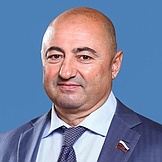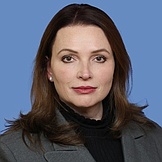Regional flags and emblems


Profile
Established 14 January 1929
Capital Nizhny Novgorod
The Nizhny Novgorod Region is part of the Volga Federal District
Area 76,600 sq km
Population 3 037 800 (2025)
Ethnic groups
(2020 National Census, %)
Russian – 95,21
Tatar – 1,04
Other – 3,75
Administrative divisions (2024)
Municipal districts – 36
City districts – 15
Geography and climate
The Nizhny Novgorod Region is located in the center of European Russia, in the middle reaches of the Volga, which crosses the region from east to west dividing it into two parts: the lowland and forested Left Bank and the upland forest steppe Right Bank, which is the continuation of the Volga Upland.
The region borders on the republics of Mari El, Mordovia and Chuvashia, as well as the Ryazan, Vladimir, Ivanovo, Kostroma and Kirov regions.
There are over 9,000 rivers and streams in the region, as well as 2,700 lakes, ponds and reservoirs. The largest reservoirs include Gorky (area 320 sq km) and Cheboksary (area 790 sq km).
The Volga with its tributaries the Oka, Kudma, Sura, Uzola, Kerzhenets and Vetluga is the biggest river in the region.
The region has temperate continental climate. January temperatures average –11.4°С and July temperatures average 18.2°С.
The region has the Kerzhenets State Nature Reserve, regional state nature sanctuaries and a federal natural landmark, Lake Svetloyar.
Government
The legislative branch is represented by the Legislative Assembly of the Nizhny Novgorod Region, which is the permanent, representative and only body of legislative authority in the region.
The Legislative Assembly of the Nizhny Novgorod Region has 50 deputies, elected for five years, with 25 of them running in single-mandate constituencies and the other 25 in the single electoral regional district in proportion to the number of votes cast for lists of candidates nominated by electoral associations.
The current Legislative Assembly was elected in September 2021. Its term expires in September 2026.
The system of executive bodies of the Nizhny Novgorod Region includes the Governor, the Government, and other executive authorities of the region.
The Government is the permanent executive body of the region, coordinating the activities of the region’s executive bodies and determining their powers, particularly in relation to the legal regulation of public relations within their statutory purview.
The Governor of the Nizhny Novgorod Region is the region’s highest-ranking official and head of the regional Government, runs the executive branch in the region and determines the structure of the executive bodies in the region. The Governor is elected for five years by Russian citizens who permanently reside in the region. The term of the current incumbent expires in September 2028.
Economy and natural resources
The Nizhny Novgorod Region is one of the most economically developed regions in Russia.
Industry, which accounts for one third of the regional GDP, is the base of the region’s economy.
The automotive, metals, chemical and nuclear industries, pulp and paper production as well as aviation, shipbuilding, electronics and other manufacturing sectors are the key industries in the region. ”Automobile plant ‘GAZ’, Lukoil-Nizhegorodnefteorgsintez, Vyksa Steel Works, RusVinyl, Pavlovo Bus Plant, Atomstroyserviсе are the largest companies.
The region has unique research potential and world-famous research schools in radio physics, electronics, nuclear and laser physics, chemistry, microbiology, cardiology, traumatology and orthopaedics.
Mineral resources include molding and glass sand; high-melting, fire and light clay; gypsum rock, anhydrite, carbonate rock, raw clay, peat, sapropel, underground sweet and mineral waters and therapeutic muds.
Agriculture accounts for about 5% of the regional GDP. The region grows rye, barley, oat, grain, buckwheat, sugar beet, flax, onions and potatoes. Dairy and beef cattle breeding as well as pork and poultry farming are also well developed.
The region’s electricity, gas and water are produced and distributed by thermal power stations and hydroelectric power stations.
Nizhny Novgorod is a major transport hub. It is located at the intersection of the north-south and east-west transport corridors and is part of the second pan-European corridor Berlin-Minsk-Warsaw-Moscow-Nizhny Novgorod-Yekaterinburg. Quality water, railway and road infrastructure provides reliable connections with raw material bases and districts that import the region’s products as well as with large cultural centers.
Culture and tourism
The huge historical and cultural heritage of the Nizhny Novgorod Region is represented by over 3,000 historical, cultural and architectural landmarks, including 400 of federal significance, such as ancient fortress cities Nizhny Novgorod (1221), which is included in the UNESCO list of the 100 cities with the most historical and cultural value; Gorodets (1152) and Arzamas (1552). Other unique cultural, historical and spiritual sites include the Nizhny Novgorod Kremlin (16th century), Monastery of Macarius of the Yellow Water Lake (17th century) and St Trinity’s Diveyevo Convent (19th century). The Nizhny Novgorod Region is one of the top 10 Russian historical areas and also a leader in artisanal crafts.
Nizhny Novgorod is a city that combines magnificent nature, industrial power and rich history and culture. The city’s historical and cultural potential includes 900 landmarks. The historical centre of the city, which is located in its elevated part, has a large number of preserved civil buildings of the 18th – early XXth centuries, including numerous wooden houses.
There are Maxim Gorky Museum-House; the only museum in Russia devoted to and named after Nikolai Dobrolyubov, Pushkin Museum and Sakharov House- Museum in Nizhny Novgorod. The city is famous for its arts: the collection of the Nizhny Novgorod Art Museum is one of the best ones in the Volga Region. There also are the Local Historical Museum, Museum of Artisan Crafts and the Museum of Wooden Architecture as well as GAZ – automotive plant museum, telling the story of its Soviet past and the present.
The Nizhny Novgorod Region is a place for all kinds of tourism: cultural, educational, cruise, rehabilitation, business, event, environmental, adventure and agricultural, as well as for hunting and fishing. Rehabilitation, cultural and cruise tourism are most popular. Various ethnic groups living in the region, historical settlements of national and regional significance and unique ethnic specifics, such as Old Believers, can help develop ethnographic tourism.
The Nizhny Novgorod Region has a number of nature reserves and natural landmarks. Tourists will enjoy a picturesque tour along the Volga. A popular route includes St Macarius Monastery founded in the 17th century, where the largest Volga fairs are hosted. The region also has extensive hunting and fishing grounds, as well as places for extreme tourism such as alpine resorts in the Bogorodskoye, Lyskovo and Kstovo districts and in Nizhny Novgorod.


